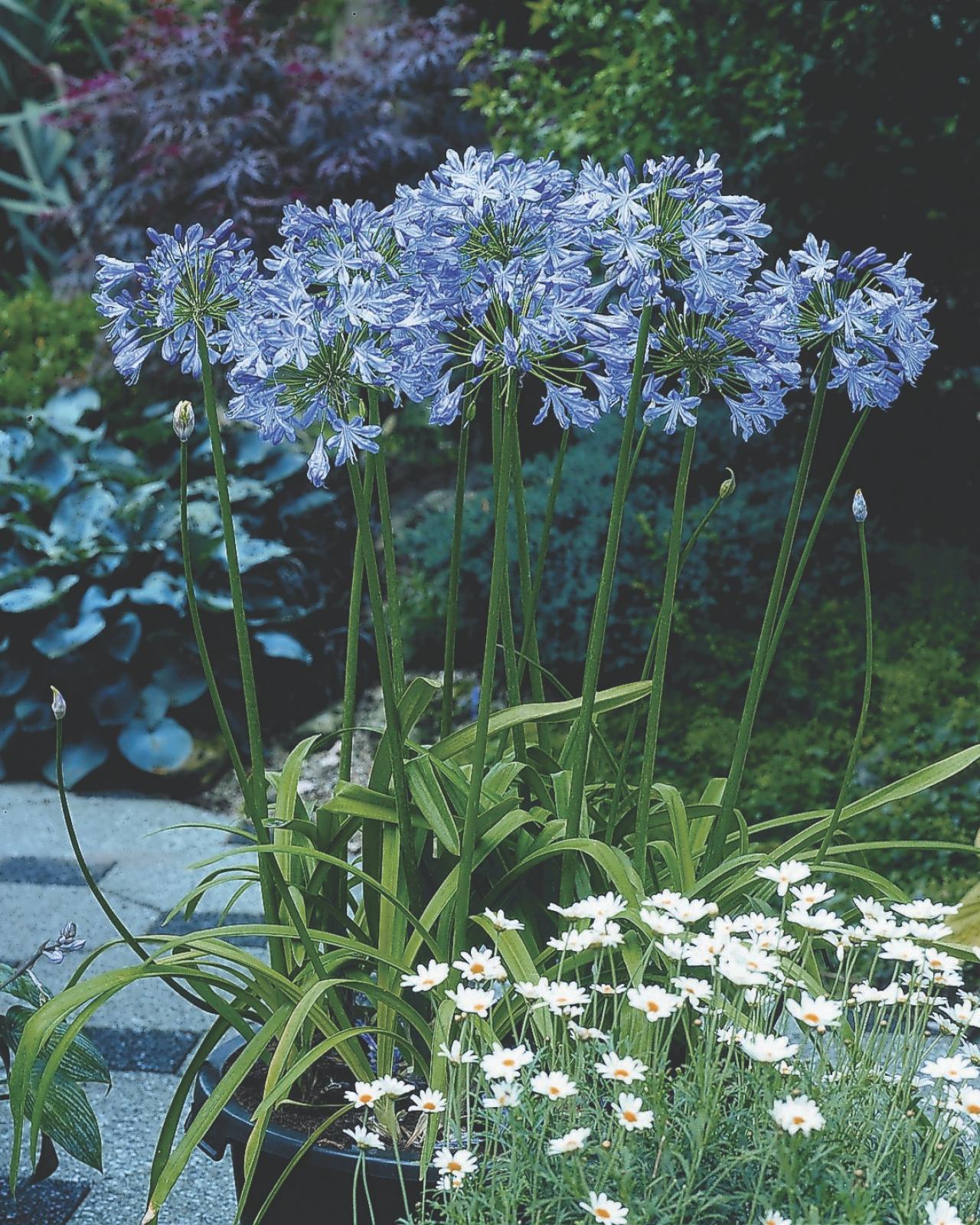Understanding the Art of Agapanthus Treatment: Necessary Steps for Healthy And Balanced Growth and Vivid Blossoms
In the realm of gardening, the growing of agapanthus stands as a rewarding endeavor for those that seek to support these classy flowering plants. From selecting the appropriate variety to mastering pruning techniques, the journey in the direction of cultivating prospering agapanthus plants is diverse and holds the vital to opening the complete possibility of these agricultural gems.

Picking the Right Agapanthus Selection

When choosing the ideal Agapanthus selection for your yard, take into consideration elements such as environment suitability, blossom color, and growth habit. Agapanthus, frequently called Lily of the Nile or African lily, comes in a range of colors ranging from shades of purple and blue to white. Choose a bloom color that complements your existing garden palette to develop a harmonious landscape. Additionally, think about the environment in your region to make sure the Agapanthus variety you pick can flourish in your certain conditions. Some selections are more forgiving of chilly temperatures, while others like warmer environments. Understanding the growth practice of various Agapanthus varieties is critical for appropriate placement within your garden. Some selections have a clumping growth behavior, perfect for borders or containers, while others have a more dispersing nature, suitable for ground cover or mass plantings. By meticulously evaluating these elements, you can select the excellent Agapanthus range to enhance the appeal of your garden.
Perfect Planting Problems
Thinking about the optimal ecological needs is necessary for effective Agapanthus cultivation. Agapanthus grows in well-draining soil with a slightly acidic to neutral pH level. When planting, choose a location that obtains complete sunlight to partial color. In hotter climates, offering some afternoon color can avoid scorching of the fallen leaves. Agapanthus plants are delicate to chilly temperature levels and should be protected from frost during cold weather.
To guarantee healthy and balanced growth and dynamic blooms, plant Agapanthus bulbs at a deepness of concerning 2-4 inches and room them 8-12 inches apart. Mulching around the base of the plants helps retain wetness and suppresses weed development.
Watering and Fertilizing Tips
Maintaining proper wetness degrees and giving vital nutrients are vital components in the treatment routine for Agapanthus plants. When it comes to sprinkling Agapanthus, it is important to strike an equilibrium. These plants choose constantly moist dirt but are prone to root rot if overwatered.
Fertilizing Agapanthus is crucial for advertising healthy and balanced growth and respected blooms. Use a balanced fertilizer, such as a 10-10-10 formula, in the very early spring as brand-new development arises. By complying with these watering and feeding suggestions, you can guarantee your Agapanthus plants thrive and create lively, durable blossoms.
Pruning Strategies for Agapanthus
Trimming Agapanthus plants at the appropriate times and with proper strategies is critical for preserving their wellness and advertising ideal growth and flowering. The suitable time to trim Agapanthus is in late wintertime or early springtime prior to new growth emerges.
Deadheading spent flowers can likewise reroute the plant's power right into producing more blooms instead than setting seeds. If you desire to accumulate seeds for breeding, leave some flowers to completely dry and fully grown on the plant.
Keep in mind to use tidy, sharp devices to make accurate cuts and minimize the risk of presenting conditions. Agapanthus. Regular pruning will help keep your Agapanthus looking healthy and balanced and cool while making Discover More Here sure an abundant display screen of beautiful flowers
Handling Typical Insects and Illness
After guaranteeing proper pruning strategies for Agapanthus, it is vital to deal with typical parasites and conditions that can affect the wellness and vitality of these plants. One usual insect that influences Agapanthus is the Agapanthus gall midget.
Furthermore, Agapanthus plants can suffer from root rot if they are grown in poorly draining soil. By being vigilant and taking timely activity against bugs and conditions, you YOURURL.com can help your Agapanthus plants prosper and produce dynamic blossoms. Agapanthus.

Conclusion
In conclusion, grasping the art of agapanthus care involves selecting the ideal variety, offering excellent planting conditions, appropriate watering and feeding, suitable trimming methods, and dealing with usual insects and illness. By adhering to these important steps, you can guarantee healthy growth and lively flowers for your agapanthus plants. Bear in mind to consistently check and maintain your plants to advertise their total health and longevity.
To ensure healthy and balanced development and dynamic blossoms, plant Agapanthus light bulbs at a depth of about 2-4 inches and room them 8-12 inches apart. By adhering to these watering and feeding suggestions, you can guarantee your Agapanthus plants thrive and generate lively, lasting blooms.
One usual parasite that impacts Agapanthus is the Agapanthus gall midge. Additionally, Agapanthus plants can suffer from origin rot if they are planted in improperly draining pipes dirt. By adhering to these essential steps, you can ensure why not try this out healthy development and dynamic flowers for your agapanthus plants.